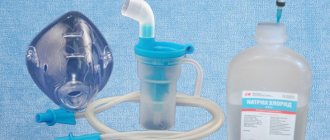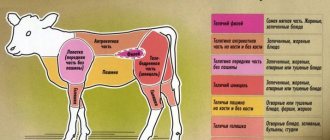After birth, he may have been kept in hospital for a while because he was too small, sickly, or slow to develop. You may have been advised to make him eat more and gain weight. You're more likely to do just that - we worry less about how a baby eats and develops as their weight increases. But how can you help your baby eat well so that he gains weight?
With body weight less than 1500 g: initially, parenteral nutrition, but as soon as general condition allows, early initiation of oral nutrition. Exceptions: circulatory instability, severe lung diseases, severe infections.
Principles of feeding premature babies
| Body weight at birth, g | Number of feedings | Increase in the amount of food per day, g | Increase in the amount of food per feeding, g |
| <1000 | 12 | 6-12 | 0,5-1 |
| 1000-1500 | 10-12 | 10-25 | 1-2 |
| 1500-2000 | 8 | 30-40 | 4-5 |
| 2000-2500 | 6-8 | 40-50 | 6-7 |
Since stomach capacity is limited, feed frequently in small portions.
If food is well tolerated, increase its amount until the full volume is reached (about 1/6 of body weight).
If regurgitation occurs and residual volumes of food in the stomach increase, reduce the amount of food offered.
Your child has special nutritional needs. During the first weeks of your baby's life, continue to stay in touch with your healthcare team. They will give you breastfeeding advice or advice on which formula is best to use. They will also help you evaluate your baby's sucking and tell you whether he is coping with sucking and swallowing. Ask them to watch how you hold your baby while feeding. To eat well, the baby must feel comfortable, and for this his body needs to be in the correct position: the head, neck, shoulders and hips form a straight line, the head sits straight on the neck, or is slightly tilted back.
Your child will eat. Trying to force a child to eat is not a solution to the problem. Children cope better with their meals when they are allowed to do their part in feeding. A three-pound (1 kg 360 g) premature baby who is allowed to feed on demand eats less and grows better than babies given a calculated amount of formula by the hour. If you trust your baby in feeding, both will benefit.
Give your baby the opportunity to become comfortable with the nipple as early as possible. Try to ensure that the hospital allows you to feed your newborn as early as possible. He may eat very little or refuse to eat at all, but if he takes the nipple into his mouth (even if he doesn’t get anything from it at all), then further learning the art of eating will go much faster, and nutritionally, things will go better for the baby. Children who receive even a tiny amount of food early on have a much better digestive system than children who do not receive this food.
Your child will be cautious. Even if you took your baby home, his mouth is still very sensitive after what happened to him in the hospital. If a child has been tube-fed and has been exposed to a ventilator, he or she will be wary of anything unfamiliar that comes into his or her mouth. A new pacifier, a new formula, or a new feeding method may be frightening to him. It is very important to work with the child slowly and persistently, using only one nipple and only one milk formula - only then the baby will get used to treating them without fear.
Your child knows how much to eat. Even a tiny child knows how much he needs to eat. However, if your baby was fed on a feeding schedule in the hospital, he or she will not have the opportunity to experience what it feels like to be hungry and full and what it is like to eat according to those feelings. Now he is at home, it is very important to teach him to eat on demand. Observe your baby to understand his signals of hunger, fullness, desire to communicate with you or take a break.
Premature babies give unusual hunger signals. Premature babies, as well as sick children whose feedings have been disrupted early in life, often cannot clearly demonstrate that they want to eat. The signals of such a child are more blurred. When he's hungry, he may become tired, irritable, or fall asleep instead of chewing. Hunger makes him lose interest in communicating with you and is so exhausting that it becomes difficult for you to attract your baby's attention. His body may become tense or, conversely, the child begins to squirm.
First of all, it is necessary to find a connection between the child’s signals and his hunger. Eventually your baby will begin to understand what it is like to be hungry. He will be able to show you more clearly what he wants to eat.
Teach your child a proper sleep pattern. A good appetite goes hand in hand with sleep patterns. Wait until your baby wakes up before feeding him. When his sleep is deep, it is almost impossible to wake him up. If your baby moves, it may mean that he is awake or in the active stage of sleep and will soon go back into deep sleep. The baby must have woken up if his movements continue for a long time, and he even begins to be capricious. Only in this case can you help him finally come to his senses and do his part in nutrition.
To wake up, the child needs your help. When the baby starts to wake up, pick him up, but don't rush to feed him until he finally comes to his senses. Full wakefulness is defined as “the time immediately after a state of drowsiness and before the child becomes fussy. Most premature babies have trouble waking up fully without becoming upset, so it's your job to help them do this. You can help your baby wake up and concentrate by talking to him. Change his diapers. Bring your baby close to your face (there should be about nine inches of space between your face and your baby's face) and let him explore you. When imitating his sounds and facial expressions, do so slowly and carefully. Experiment with tone voices and touching different parts of the baby’s body; pay attention to those actions that help the baby wake up calm.
Produce them slowly, gently. Avoid tickling or shaking your baby, as this will make him more nervous and will not help him eat well. You don't want your child to have trouble focusing on food. Give him the opportunity to wake up and feel hungry, only then feed him. The baby needs time to prepare for feeding. In this way, he learns to understand what the feeling of hunger is and what needs to be done to make this feeling disappear.
Help your child stay awake and calm during meals. It will be great if over time your child gets used to not falling asleep while eating. If he falls asleep during feeding, such a dream will not teach him to feel full or consciously put himself to sleep. Sooner or later you want him to sleep well, and if you carry him to his crib sleepy but not asleep, he will learn to do so. By holding your baby in your arms and bringing him close to your face so that he can see you clearly, you will help him stay awake during feeding. While he is eating, talk to him in a soft voice.
Feedings should be smooth and continuous. Try to eliminate all distractions, do not shake the baby or force him to spit up (unless he is in obvious discomfort). If the child is fussy, gently calm him down, and then offer him food again. If he shows that he doesn't want any more, don't try to force feed him.
Know when to stop. It is very tempting to force your child to eat more when he has already indicated that he does not want any more, but this is not a good idea. If you want to teach him to pay attention to the feeling of hunger, you must also teach him to pay attention to the feeling of fullness. Otherwise, when the baby gets hungry, he will get used to the fact that unpleasant emotions and sensations will follow, for example, disrespect for his person, expressed in force-feeding, and discomfort when the stomach is full. When your baby is full, he will let you know: he will slow down his sucking, turn away from the nipple, relax his body, or purse his lips. His breast seeking reflex will disappear. Some children, having eaten, begin to nod off, gradually losing interest in sucking. Others lose interest in sucking suddenly.
If your child stops eating, give him the opportunity to rest and look at you. Talk to him in a low voice^ Perhaps soon he will feel hungry again. Offer him a nipple, but don't insist. By your actions you are simply giving him the opportunity not to refuse.
You must be sure that the child is developing. Premature babies are very small and it is always difficult to see their developmental progress. You need confirmation that your child is developing well, but standard height-weight curves will not help. Ask your doctor to create a special height-weight chart for premature babies, where you can see the E-score and how your baby is gaining weight.
Do not rush to give up formula and switch to solid foods. When making the decision to start solids, always base your decision on what your baby can do, not what age they are. Even if you calculate the baby's age based on gestational age, this will not help you determine when to start solid foods. In order for a child to learn to love such food, you need to work with him slowly and carefully - he is as wary of new tastes and textures as he once was of a pacifier. Take your time. The time will come when your baby will eat a variety of foods. Continue giving him formula until he is comfortable with solid foods. This will happen when the child is at least one year old, taking into account the period of intrauterine development. If it’s later, it’s okay: just give him formula in a cup so that he gets used to drinking and doesn’t give all his attention to the nipple.
For nursing premature babies, the main condition is adequate nutrition. This is due to active growth and construction of new tissues.
During the adaptation period, the formation of many organs and systems occurs. Providing for a low birth weight newborn baby can be difficult due to the immaturity of the digestive system and the intensity of metabolic processes.
Methods of feeding premature and low birth weight babies are as follows:
- enteral nutrition (maternal breast, bottle feeding, disposable catheters, nasogastric and nasoduodenal routes);
- long-term tube feeding;
- parenteral nutrition.
Features of premature babies
A premature baby differs from other babies born on time by having a lower body weight at birth. Therefore, nature endowed them with rapid rates of growth and development. And such crumbs need more nutrients for this.
But after early birth, premature babies have the following characteristics:
- they have weak sucking and swallowing reflexes;
- immaturity of the gastrointestinal tract: there are no enzymes in the required quantities and salivation is reduced;
- no subcutaneous fat;
- disproportionately large skull in relation to the skeleton;
- there are wrinkles on the skin, sometimes there is fluff;
- large size of fontanelles;
- the navel is located in the lower abdomen, the umbilical cord falls off on the 10th day.
All these differences disappear over time, but such a child needs to be cared for more carefully.
Starting complementary feeding for a premature baby
Before introducing complementary foods, you should make sure that the necessary conditions for this are met, namely:
- the general condition of the child is normal, in other words, the baby is healthy;
- the baby’s increase in body weight and height corresponds to age norms;
- the results of diagnostic tests (general blood test, urine test, etc.) are normal.
Remember that complementary foods should not be introduced during the period of vaccination or acute illness.
According to the recommendations of UNICEF and WHO, the first complementary foods are introduced to children of the first year of life when breastfeeding from 6 months, and when mixed or artificial - from 5 months. The first complementary foods for premature babies are administered in the same way as for full-term babies (plus or minus two weeks). Learn the rules for introducing complementary foods while breastfeeding.
When to introduce food to your baby
Premature babies begin to feed complementary foods earlier, since the nutrients in their bodies are limited. Two-month-old babies receive juices and weakly concentrated vegetable decoctions. Give them in a small volume, 3-5 drops at a time. The amount of liquid is gradually increased. Start with apple, pear, currant and cherry juices. When the baby reaches 3 months of age, he is offered fruit mass. Start a new feeding with half a teaspoon of puree, and the amount increases over time.
At 4 months, the baby is introduced to the diet with an egg yolk, which has been ground with breast milk or an adapted formula. It is advisable that it is not a chicken product, but a quail product, as it is less allergenic. In addition, at this age, the premature baby is given curd mass. And mothers, on the advice of pediatricians, carefully add gluten-free cereals to their diet. This is buckwheat, rice and corn.
At 5 months, the child is introduced to vegetable purees. And since such children often develop iron deficiency anemia, doctors recommend starting to get acquainted with meat. They start giving children a small amount, and when they reach the age of 7 months, the amount is increased.
After 8 months, a premature baby calmly consumes flour (bread, various types of unsweetened and low-fat cookies, dried bread) and vegetable soups.
At 9 months, children are already happily drinking kefir and other dairy products. Basically, the rules for feeding a premature baby correspond to the general rules. While the baby is getting used to new foods, they carefully monitor the child’s behavior, skin, and stool. At the same time, even a slight change in his condition is noticed. If the baby does not want to eat something, then they do not force him - it is better to return to this product after 2 weeks.
Parenteral nutrition
Total parenteral nutrition is prescribed to children with severe prematurity in severe condition, regardless of their gestational age, but in these cases enteral nutrition is still prescribed in minimal volumes to maintain the normal functioning of the mucous membranes and intestines, and prevent mucosal atrophy. The introduction of breast milk through a nasogastric tube is prescribed 12-48 hours after the birth of the child in a volume of no more than 10 ml/kg/day. This promotes normal bowel function.
Feeding regimens and methods for premature infants may vary depending on body weight.
If the body weight is less than 1000 g, total parenteral nutrition and “trophic nutrition”, or partial parenteral nutrition and long-term tube infusion are prescribed.
The weight of a premature baby of 100-1500 g requires the appointment of partial parenteral nutrition and long-term tube infusion or long-term tube infusion.
With a body weight of 1500-2000 g, either long-term tube infusion, or portioned bottle feeding, or breastfeeding only can be carried out.
With a body weight of 2000-2500 g, tube and portion feeding or breastfeeding are prescribed.
The volume of daily milk is determined from the calorie content or functional capacity of the stomach, in the latter case the formula is used:
3rd day of life x body weight in kg,
which corresponds to the amount of milk per feeding, provided 6-7 feedings a day.
When calculating nutrition, despite the existing formula, the calorie method should be used. By the 17th day of life, the child’s needs increase to 130 kcal/day. The use of human milk provides nutrition up to 140 kcal/kg/day by the age of one month. Starting from the 2nd month of life of a premature baby weighing more than 1500 g, the calorie content of the diet is reduced monthly by 5 kcal/kg. Caloric intake in very premature infants is reduced after 3 months of age.
For a premature baby, the quantity and quality of the protein complex of food are important. The average amount of protein should be 2.8-3.1 g/kg/day, since more protein can lead to metabolic disorders.
In a premature baby, gastric enzymes are activated by the 26th week of gestation, and intestinal peptidase reaches activity already at the 20th week.
In food products for children, the content of casein in food products is important, which can have an undesirable effect in the form of toxic effects, therefore, formulas with a predominance of whey protein are produced for premature infants. Soy formulas should not be used in the nutrition of premature infants, since the absorption of protein, carbohydrates and minerals from them is difficult.
The daily diet of premature infants should contain 5-7 g/kg of fat. Pancreatic lipase is not sufficiently active in premature infants, so lipolysis is difficult. Breast milk contains lipase, which is involved in the breakdown of fats. Medium chain triglycerides are introduced into the composition of specialized mixtures, which are absorbed without preliminary splitting.
In addition, lipolic and linolenic acids are introduced into the composition of specialized mixtures, which compensate for the maturation of the visual analyzer.
Premature babies, regardless of the type of feeding, should receive 10-14 g/kg body weight. Due to the reduced activity of lactose, amounting to 15-30% of its level in a mature newborn, to improve the digestibility of the carbohydrate complex in specialized milk formulas, part of the lactose is replaced with dextrine maltose.
Premature babies have a higher need for minerals, salts and vitamins than normal children.
The need for calcium is 4.7 mmol/kg, or 188 mg/kg/day, for phosphorus - 4 mmol/kg, or 124 mg/kg/day, for magnesium - from 2 to 6 mt/kg/day.
Neither human milk nor fortified formulas can provide an adequate supply of minerals. Premature babies are recommended to be given specialized supplements or products that contain higher amounts of these ingredients.
To prevent the possible formation of calcifications in the kidneys, it is necessary to monitor the excretion of calcium in the urine.
Premature babies have very low iron stores, which is associated with a reduced number of red blood cells in the blood and the occurrence of anemia. Breast milk does not provide the required amount of iron to the body of a premature baby. Prevention of anemia involves prescribing iron supplements to premature babies, starting from 2 weeks of age - 6 mg/kg/day.
A lack of vitamins in the diet of children can cause diseases of certain organs and systems of a premature baby.
The complex action of vitamins A, E, C, and betacatzotin provides powerful oxidative protection and the formation of the body's immune response.
Vitamin D ensures calcium metabolism, affects muscle function and the formation of the skeletal system.
B vitamins are involved in all metabolic processes, growth processes and normal digestion.
Taurine takes part in the formation of the visual analyzer and the central nervous system.
Inositol affects the synthesis of vitamins by intestinal microflora.
Carnitine regulates the metabolism of glutamic acid, which plays a significant role in the development of brain activity.
Scheme for introducing complementary foods to artificial and breastfeeding
Complementary feeding for the majority of premature babies is given up to 4 months, since the intake of small amounts of nutrients into the body poses a risk of developmental delay.
A premature baby is introduced to “adult” food, which is on any type of feeding, with a consistency that is thicker than mother’s milk or adaptation formula. After all, many babies born prematurely have a high risk of digestive disorders. For this reason, rice porridge is given to the baby. If mothers make a choice between store-bought and homemade porridge, then it is better to go with the first option. This is because the raw materials from which the product for babies is made are of higher quality than regular cereals. It is also environmentally friendly, fortified and enriched with essential minerals.
If children have constipation and are gaining weight well, then boiled vegetables or fruits are quite suitable for them as a first complementary food.
All these nuances allow you to get more uniform nutrition throughout the day. With the right choice of first complementary foods, the functioning of the baby’s gastrointestinal tract improves. If anemia occurs due to a lack of iron, then at 5 months you can already accustom your baby to dietary types of meat. This component of heme origin is well absorbed by the child’s body.
The age at which the baby is introduced to food plays a big role. If this happens late, then there are babies who are not able to chew, they choke on everything that differs from a homogeneous liquid. Therefore, you need to get used to a different consistency of food no later than 9 months.
Order of introduction of products
Prematurity dictates its own conditions and ways to improve the health of children. For example, your diet is significantly different from your usual diet.
Peculiarities:
- It’s better to start with buckwheat porridge. It is prepared using mother's milk, nutritional formula or water. After getting used to it, rice and then corn grits are offered. They provide the body with zinc and iron. The cereal is ground in a coffee grinder or rubbed through a sieve. After a month and a half, add a drop of vegetable oil.
- Vegetable decoctions and purees are prepared from fresh, ripe locally grown fruits. The first vegetable a baby is introduced to is zucchini. Then cauliflower and carrots appear. First they make purees from one ingredient, and then offer mixed recipes.
- After one of the feedings is completely replaced with porridge, and the other with vegetables, they move on to fruits. Tender puree is administered in small portions and complements one of the meals. The priority, of course, is green apples and pears. They do not cause allergies. Pears can have a fixing effect, so you should watch your stool carefully. Next come peaches, prunes and bananas.
- Juices appear on the menu no earlier than eight months. Among the first drinks offered are apple and pear nectar. Then the juices are mixed. Each acquaintance begins with 1 teaspoon. If well tolerated, introduce other fruit drinks.
- They try to treat them with meat dishes at 8 months of age. Rabbit and turkey meat are the most easily digestible. After some time, veal, beef, pork, and poultry are introduced. Usually meat puree is mixed with vegetable puree or added to porridge. It is optimal to increase your daily intake to 3 g per kilogram of weight.
- Closer to 9 months, vegetable soups begin to be prepared. They are complicated by cereals, herbs and vegetable oil. It is recommended to serve during the daytime, so that later the third feeding becomes lunch.
- The feeding scheme with fermented milk products becomes relevant for premature babies only at 9-10 months. The fourth feeding includes children's low-fat kefir and liquid yogurt, starting with half a teaspoon. After adapting to the new direction in food, the child is ready for cottage cheese. Goat's milk is rich in proteins that are difficult to digest, so there is no point in introducing it before one and a half years.
- Egg yolks can be introduced after milk feeding. It's better to start with quail. By 10 months, the digestive tract digests small portions of vegetable purees. The maximum daily intake is half a yolk.
- Fish dishes can be introduced closer to 11 months. They are allowed once a week and should be served instead of meat. Children get used to pike perch and cod most well. It's worth starting with them. Then flounder, tuna, saury, hake, pollock, and salmon are offered. When baked or boiled, a portion of fish is added to vegetable puree.
Acquaintance with each new product begins with a minimum volume of 5-10 grams. Gradually, 1 teaspoon becomes the usual serving. Closer to 12 months, porridge, vegetable purees, kefir are consumed at 180-200 g. Fruits, meat - at 80-100 g.
Table of introduction of complementary foods by month
For a premature baby, the timing of adding complementary foods is individual; the table is compiled by the local pediatrician, based on the characteristics of its development and weight gain. General data on the time of introduction to new food can be used by those mothers whose babies are recovering well and have a body weight in accordance with the standards.
| Product or dish, units of measurement | 6 months | 7 months | 8 months | 9 months | 10 months | 11 months | 12 months |
| Porridge cooked in water, ml | 150 | 180 | 180 | 200 | — | — | — |
| Porridge with milk, ml | — | — | — | 200 | 200 | 200 | 200 |
| Boiled grated vegetables, g | 80 | 170 | 170 | 170 | 180 | 200 | 200 |
| Fruit mass, g | 50 | 60 | 70 | 70 | 80 | 100 | 110 |
| Vegetable oil, ml | 1 | 3 | 3 | 5 | 5 | 5 | 5 |
| Flour products, g | — | 5 | 5 | 5 | 10 | 10 | 10 |
| Juices, ml | 5 | 5 | 10 | 50 | 60 | 80 | 100 |
| Butter, g | — | — | — | 3 | 5 | 5 | 5 |
| Egg yolk | 1/4 | 1/4 | 1/4 | 1/4 | 1/4 | 1/2 | 1/2 |
| Kefir | — | — | 15 | 30 | 40 | 90 | 150 |
| Cottage cheese | 5 | 5 | 10 | 30 | 40 | 50 | 100 |
| Minced fish | — | — | — | — | 20 | 50 | 60 |
| Chopped meat | 10 | 10 | 20 | 40 | 60 | 70 | 80 |
Premature babies: survival records
Any baby born less than 37 weeks (that is, before day 260) of pregnancy is considered premature. Childbirth can occur ahead of schedule for many reasons, and there is no need to look for the culprits here. In most cases, premature babies have a body weight of less than 2500 grams and a length of less than 45 cm. At the same time, low weight is not an absolute sign of prematurity, since even during intrauterine development some babies lose weight, being born as real crumbs.
Of course, the main problem of babies born prematurely is the difficulty of adapting to the conditions of the outside world due to insufficient development (primarily of the respiratory, circulatory, digestive and excretory systems). To ensure the survival of such babies, doctors need to put in much more effort than in a standard case. Most often, a premature baby requires a full range of resuscitation measures. The newborn is placed in a special incubator (incubator), where he is kept until he reaches the required height, weight and degree of development in order to enter the “big world”.
Unfortunately, specialists are unable to deliver many babies, but the opposite situations also happen when children, who are absolutely hopeless at first glance, courageously fight for life. We will now tell you about several record-breaking babies.
Rumaisa Rahman was born a pair of twins on September 19, 2004 at Loyola University Medical Center in Maywood, Illinois. The babies were born 15 weeks early, at 26 weeks of pregnancy. Rumaisa weighed only 244 g, and her twin sister Hiba weighed 563 g. Tiny Rumaisa (the name translates as “Whiter than Milk”) has been compared to a mobile phone, a can of Coca-Cola, and a package of butter, which is not at all surprising considering height 24 cm (that is, half the norm). Both girls underwent laser vision correction surgery, which is a fairly common problem among premature babies. The babies' parents are from India. Early birth was caused by the illness of the girls' mother, Mahajabin Shalk, who suffered from a serious form of preeclampsia (a critical decrease in cerebral circulation combined with generalization of systemic disorders of the liver, kidneys, hemostasis, hemocerebrospinal fluid dynamics, lungs, and cardiovascular system). She took steroids during pregnancy to ensure her children's lung development. Among other things, the woman’s blood pressure abnormally increased during childbirth, which is why doctors had to resort to a caesarean section. Of course, in this situation, the experts did not particularly believe in the success of the operation. Oddly enough, in just over 3 months the girls recovered, Hiba gained weight to 2.25 kg, and Rumaisa - to 1.18 kg. “This is a blessing from God,” said the twins’ mother. 6 months after birth, on February 9, 2005, the girls were discharged home, at which point Rumaisa already weighed 2490 kg, and her height had almost doubled. The baby was even able to take part in a press conference held by doctors on the occasion of the discharge of the world's smallest born and surviving baby. For those who are interested in the further fate of the girl, we can say that at the age of five she weighed 33 pounds (14.9 kg), and her height was 3.5 feet (1.06 m). Now Rumaisa is already 7 years old.
Madeline Mann was born in June 1989, at 27 weeks, also at Loyola University Medical Center in Maywood, Illinois. Her birth weight was 280 g and she had minor cerebral hemorrhage and retinopathy. Today Madeline is already 22 years old, she considers herself an absolutely normal girl, she runs, plays the violin and is studying at the university to become a psychologist. Previous problems have not passed without a trace for her; the student suffers from asthma and is one and a half meters tall and weighs 30 kg. However, she has no other health problems.
Amilia Taylor was born on October 24, 2006 in Miami, USA (Florida). Her weight was 284 g, height 25 cm. The girl was born at the 22nd week of pregnancy. She was conceived through artificial insemination, and the birth took place via cesarean section (Amilia's mother Sonya Taylor had serious health problems). The baby spent about six months in the incubator, but upon discharge the baby’s weight was already 1.8 kg. It was for her desire for life that she received the name Amilia - “not giving up.” The girl has abnormalities in the condition of her kidneys and lungs, but overall her condition is stable. “She goes to occupational and physical therapy twice a week and sees her pediatrician every two weeks and her pulmonary doctor twice a week,” Amilia’s mom said. The family spends 2.5 thousand dollars a month to treat a premature baby. In the first six months after discharge, the parents (they are African-American) spent $100,000 of their personal savings on this, but still have never asked for help. Amilia's dad intends to raise her on his own and make her as healthy as possible.
The UK also has its own records - a girl named Ruby, for example, weighed 300 g at birth and was only 18 cm tall. According to British media, the smallest child born and survived here was Amalia Hart, weighing 340 g. However, this girl recovered very quickly, because after only 2 days of intensive care she could be disconnected from the artificial respiration apparatus.
Let us recall that in 2012 Russia is also moving to the criteria for registering newborns recommended by the World Health Organization. In accordance with them, infants born after the 22nd week of pregnancy with a body weight of more than 500 g will be registered. Until this moment, a child in our country with low body weight was not considered a fetus and was not included in mortality statistics if it lived less than 7 days. The chief neonatologist of the Ministry of Health and Social Development of the Russian Federation, Elena Baibarina, claims that today 80% of premature babies survive in our country, only 20% of them later have severe disabilities. However, the specialist has a very negative attitude towards the records described in the article. “I call it sports medicine. It is wonderful, of course, that some child survived, but here we are also talking about the interaction between medicine and journalism. You cannot say: “Well, the Japanese produced a child weighing 250 g, but our doctors, of course, will never do this.” Or describe situations when doctors told a woman that she couldn’t give birth, she had a severe heart defect and ten other diseases, but she didn’t listen to anyone and gave birth - that’s how good she is. Such notes just make me feel bad; I understand perfectly well that it was a miracle that that woman survived. Ten others who read the note and follow her will die,” Elena Baibarina said in an interview with RIA Novosti.
Photos of heroes: https://www.topnews.ru
Doctors' advice
Pediatricians have not yet come to a common conclusion regarding the timing of a child’s introduction to new foods. Some of them recommend doing this early, since they have a small supply of nutrients in the body, while others recommend doing it later, since the digestive system takes time to develop.
But in each individual case, the effectiveness of complementary feeding is assessed based on the baby’s weight gain and blood parameters (the hemoglobin level and protein content are taken into account). With proper organization of feeding a premature baby, he will catch up in development with children who were born on time and will develop in accordance with his age.
Features of introducing complementary foods for children prone to allergies
If a premature baby has a tendency to allergic reactions, introduction to complementary feeding products is postponed to a later period and the following recommendations are taken into account:
They start feeding the baby with one-ingredient dishes, for example, rice porridge or zucchini puree.
A new product is given to try in the morning, so that by the end of the day it can be noted whether an adverse reaction has appeared to it. A maximum of one new product is introduced per week.
It is important to keep a diary in which you note all the dishes your baby eats, as well as the baby’s well-being and reaction to food. If an allergic reaction occurs, no new products are introduced until the symptoms disappear.
For an allergic child under one year old, it is enough to include 1-2 porridges, 1-2 types of vegetables and fruits, as well as one type of meat complementary food on the menu. It is important for the mother to find out in advance which foods are the most allergenic and introduce them to the baby much later. For example, the introduction of eggs and fish into the menu of a premature baby with allergies is postponed until one year of age.











